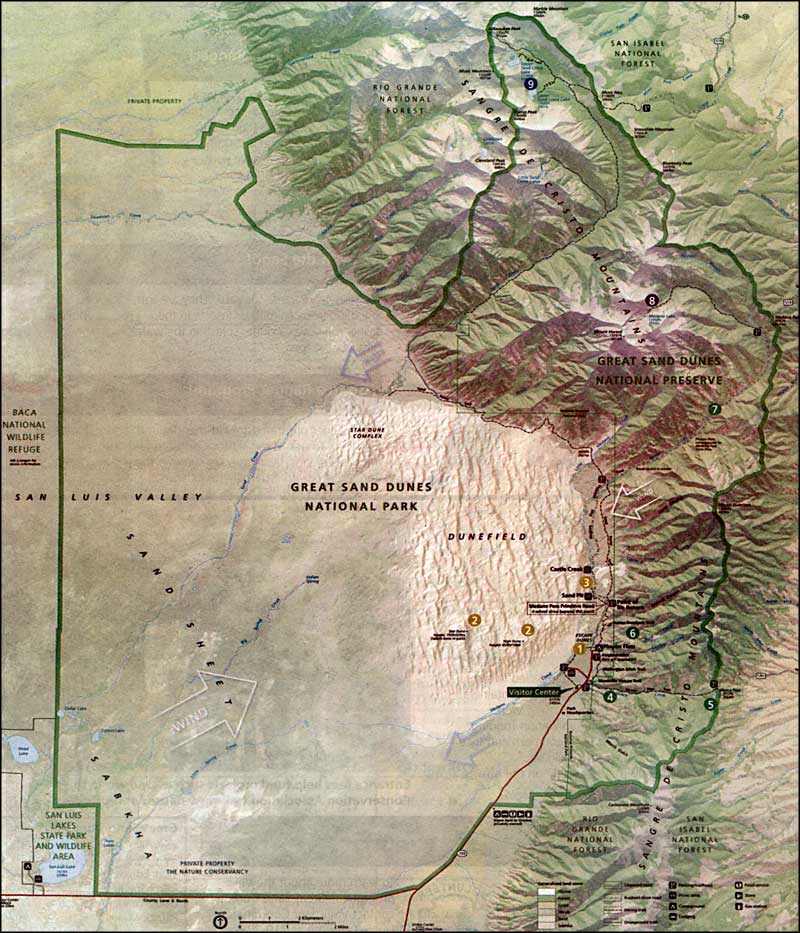
Great Sand Dunes Wilderness
The Great Sand Dunes were created by millions of years of sand collecting in a somewhat wet bowl on the western side of the Sangre de Cristo Mountains. The sand collected here because the wind couldn't quite blow it up and over the steep rise of the mountains. Then the sand stayed here because it was trapped by its own absorption of water (Medano Creek). Over the millenia, these grains of sand collected and turned into great dunes up to 700' high, rising well above the San Luis Valley floor.
The Wilderness (33,549 acres) established here is defined as a "saltbrush-greasewood ecosystem." It extends from the southern edge of the sand dunes up to what used to be the southern boundary of the Baca Grande Land Grant (which was bought by the Nature Conservancy and the National Park Service several years ago for inclusion into the Great Sand Dunes National Park, National Wilderness, Baca National Wildlife Refuge, and Rio Grande National Forest).
This is also the only Earthly home of the Great Sand Dunes tiger beetle and the giant sand treader camel cricket. If you're interested in seeing these beasties, you really need to spend a day and a night in the area and enjoy the alternating colors and shadows as the sun and moon do their thing in passing across the sky above. And if you are out and about in the dark, you might even come across some kangaroo rats playing in the sands...

Map of the Great Sand Dunes area
Geology FAQ - Photo Gallery - Great Sand Dunes Partners
National Park Service Sites - BLM Sites - National Wilderness Areas - Unique Natural Features
Outdoor Sports & Recreation - Ski & Snowboard Areas - Photo Galleries - Colorado Mountains

